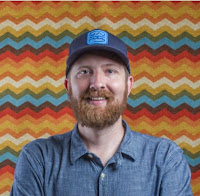 |
| Matt Bonham |
Contributed by Matt Bonham, UVAFinance Communications
The most noticeable contrast of working in the office versus working remotely/at home is the social dynamic. In the office, you’re working surrounded by colleagues and others coming and going through the workspace, which is inspiring yet can be distracting at times. Opposed to working remotely or at home, where I’m generally working alone - unless from a coffee shop or a bookstore. There are pros and cons to both - though I think I maintain a good balance in both scenarios.
Most days I work from my laptop at the kitchen table, in a room full of windows and natural light. Sometimes I also work from a home office/library multi-use room with dual monitors at the deskspace - yet no windows. Just depends - there’s no rhyme or reason to one or the other. When I’m needing a change of scenery when not in the era of COVID-19, I typically post up in a local coffee shop for a few hours.
As an introvert I think my best work comes from collaborating with others in the early going then creating and delivering a project on my own. I’m very fortunate to live on a farm, and one of the most rewarding - and therapeutic - benefits of that is being able to go for a long walk or mountain bike ride on the property when I need to step away from the computer. Some of my best ideas come from those relatively mindless walks. Additionally, I think working from home helps me focus on detailed projects such as design, illustration, film editing, and so on. When in the office, I tend to work on the more minor projects - early sketches and mockups of projects, photo editing, and/or finishing edits on the larger projects.
 |
| Matt's office has a pretty nice view! |
With the benefits, there are also challenges to working remotely/from home. There are potential distractions all around - the internet, social media, television - to name a few. Where the distractions in the office may come primarily from external sources, at home, at times we can become our own worst enemy. I admit on the larger projects, like designing UVA's annual Financial Report, there can be pitfalls from time to time - such as working longer hours due to both the scope of the project and being in a comfortable, familiar environment. However, my past work as a freelance writer and commercial photographer over the past decade helps me keep a good balance with establishing boundaries.
One of my primary routines is keeping a daily to-do list, on paper, which helps with accountability and maintaining balance on projects or counting down/checking off steps of a project. I also carry a small pad and pencil/pen for sketching and jotting down notes/ideas of creative projects. That saves a lot of time - and helps refresh my memory - when it comes to creating and completing various projects. The planning/calendar applications like Trello are great, too - I’m just used to handwriting things down on good, old-fashioned paper.
When I first began working freelance and remotely I struggled somewhat with working or sitting too long with a project, though with building habits and a routine to things with experience really helped. Procrastination may also plague some creatives, though I love what I do and that doesn’t seem to be an issue - thankfully!
Every project is different; even the new iteration of a previous project has its own nuances. Over time I think you learn what works best - from your most productive work environment, what time of day you’re most productive, eliminating distractions, taking proper breaks and walking away from time to time for a breath of fresh air - experience builds those habits. I think setting milestones within a project really helps. For example, working diligently for two hours, then take a break afterwards to reset and plan the next milestone or accomplishment. Stepping away to do something mindless - drawing, exercise, and so on, can be most helpful for a refresh and refocus.

No comments
Post a Comment
Note: Only a member of this blog may post a comment.